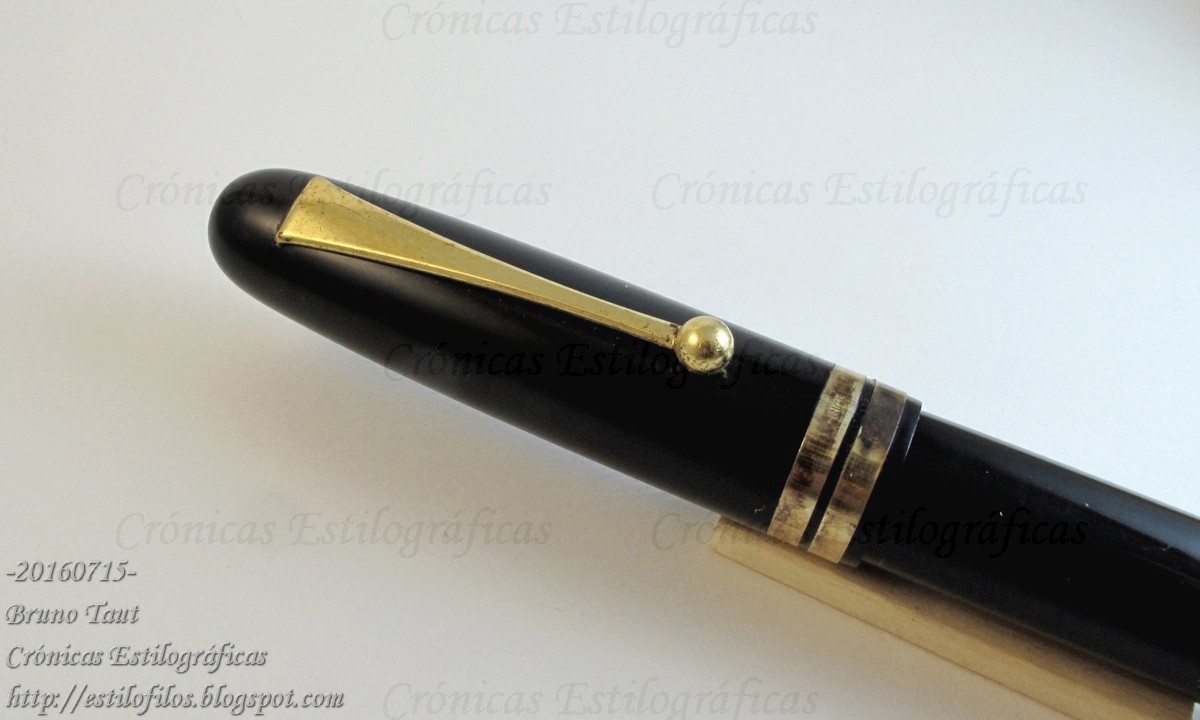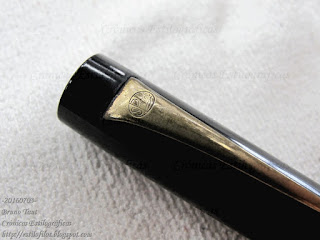The Platinum #3776 series of fountain pens is an old one. Its first model was launched by 1978. It was a very characteristic ribbed design made by Haruo Umeda. The last models are called #3776 Century, and have little resemblance to those initial models, although Platinum keeps a ribbed design in its catalog.
Along this thirty-something years of history, the basic components of the pen –nib and feed—have seen some changes in their design.
The early models, (between 1978 and some time in the early 1980s) had very cylindrical nibs and ebonite feeds. The first year model had a feed with no fins at all. There were also music nibs associated to these pens, but they are not covered on this text.

The feeds of these early models changed quickly. By the second year, they had implemented some fins.
Later on, the nib became flatter on the top area, but there were few, if any, changes on the ebonite feed. This detail changed at some point (when?) and from then on all Platinum feeds have been made of plastic.

Nib and feed from 1984. The nib is obviously flatter on top while the feed is still made of ebonite.

Nib and feed from 2002. The nib is apparently identical to the previous one (1984), but the feed is now made of plastic.

Nib and feed from a #3776 Century. Labeled as manufactured on November of 2011. Note the shorter nib and the very specific feed. Needless to say, it is made of plastic.
The latest version of the #3776 is named Century and was launched in 2011. On this newer edition, two-tine nibs (i. e., non music nibs) changed with respect to previous models. Now they are shorter than before, and the feed had been modified to anchor the nib on the right position.

On the left, a music nib of a #3776 Century, dated on 2012. On the right, a music nib of a #3776 of 2009. The feeds are identical. The nibs, almost identical...
These changes, as I said, did not affect the three-tine music nibs. In some occasions, some gold was removed from the tail of the nib –that area hidden under the section--, but is also seems not to be always the case. The feeds of these music nibs are more cylindrical in shape and have no fixed position for the nib.

Two and three tine nibs dated in 2009 and 2010. They were interchangeable in their sections. I am well aware that the two tine nib is a Nakaya, but Nakaya implements #3776 nibs.
A side effect of these differences between the feeds is their incompatibility—now, the sections of music nibs are specific for them and cannot implement regular two tined nibs. And conversely—a regular nib section cannot be equipped with a music nib (and feed). This exchange was possible in pre-Century #3776 Platinum pens.
Now the reader can extract his own conclusions about Nakaya nibs.
Ban-ei, black urushi – Pilot Blue
Bruno Taut
Nakano, September 16th, 2016
labels: plumín, plumín musical, Platinum
Bruno Taut
Nakano, September 16th, 2016
labels: plumín, plumín musical, Platinum




















































